I+D project began with the development of an efficient and decorative LED lighting system, which aims to develop LED and OLED technology in a self-powered lighting system with solar technology and other materials in experimentation for the autonomous generation of energy.
I+LED

Energy efficiency=Cost reduction:
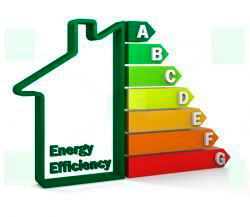
The efficient consumption of energy is achieved by regulating the given by the management of the light intensity as a function of the natural light that enters the room to be controlled:
If the room is unoccupied, it goes out, and if it is occupied, it regulates that intensity
This is achieved with movement-presence sensors and the measurement of the luminosity level, capable of bringing the necessary variables to the domotic control and control program. </ P>
If you balance the overhead of sensors and appliances and saving in consumption, this is normally favorable because the return on investment materializes in a short time.
Control:
The control implies comfort and the achieved comfort with the minimum consumption is energetic efficiency. Comfort is achieved when you have individual and centralized control locally from: conventional pushbuttons, multi-push buttons or virtual buttons from displays and touchscreens. And remotely from within: remote controls and also from outside: mobile phone, tablet, … being able to use that control, in addition to the usual conventional uses, such as individual on-off, groups of lights, … in any Housing, building, … to create the environments and scenes that the user demands.
To achieve this control, it is necessary to provide a complementary installation to the lighting circuit, by means of controllers, dimmers for the regulation of intensity or electronic devices (ballasts) capable of being able to exert this control over our lighting system. All this governed from the programming of our home automation system e-MOBILE, which will not only control the lights but also other services: motorized blinds, air conditioning, alarm, … in an integrated way.
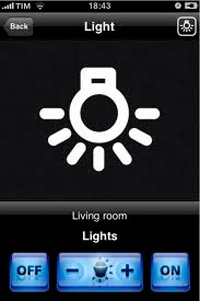
Environment of environments:
Natural Dimming
The concept that defines its meaning quite well, achieving a natural regulation, smooth and pleasant, should be easy and accepted as usual, but in the LED is not always so.
Few moments are as magical and pleasurable as watching a sunset, be it on a beach, among mountains or on an urban terrace, feel those moments where the sky turns into orange tones and the light softly disappears until nightfall.

Recreating that kind of regulation, smooth, without transitions, lengthening the time the darkness was made was simple with incandescent lamps, because simply the inertia of the incandescent filament, softened any jump of the dimmer, however bad it was.
With LEDs it is not so easy to achieve this effect. The semiconductor produces light immediately upon the passage of current and of course, any change in regulation, however small, will be visible. Here the key is the driver used and unfortunately unfortunately abound in the driver drivers that regulate steps, causing that the light regulates a transition of “jumps” of light, nothing attractive and sometimes accompanied by flicker or “strangers “In the lower zone of regulation, which is where it is more difficult to control electronic LEDs. This is not Natural dimming.
Regular until black.
Nor is it natural that the regulation only occurs in the “upper zone”, limiting its effect when we lower the levels and that the step to “zero” is instantaneous, unregulated. In this case we also find that there are many manufacturers that their drivers only regulate up to 10%, 5% or 3%. It may seem sufficient, but as we can see in the following image, the measured light is not equal to perceived light.
Our retina has a very good definition in low levels of luminosity, reason why a light source regulated to 10% our eye perceives it as if it were 32%. It would not be very natural then to regulate up to 32% of perceived light and shut down directly from that level, right?
A natural regulation will be possible with driver that allow us to regulate in the widest possible range from 100% to 0%, with a sufficient resolution so that the level changes are smooth, without visible sections. If this is combined with technologies that are sounding more and more strongly, such as “Tunable white” and “Dim to warm” we will have a natural lighting system. May the Natural dimming live!
Dim to warm, looking for the warmth of the bulb Technology that reduces color temperature as the intensity of light is regulated, as in halogen or incandescent lamps.
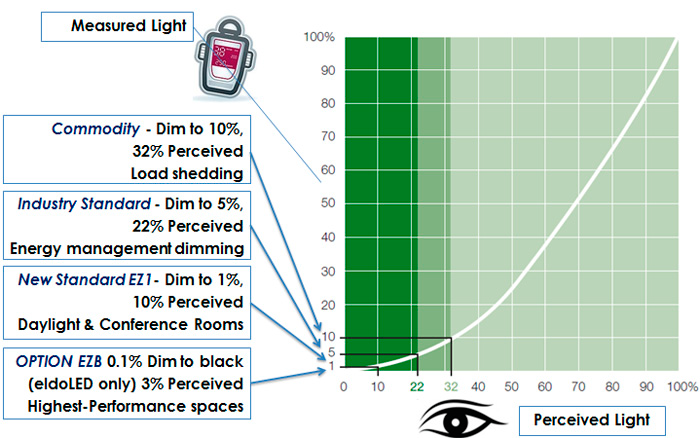
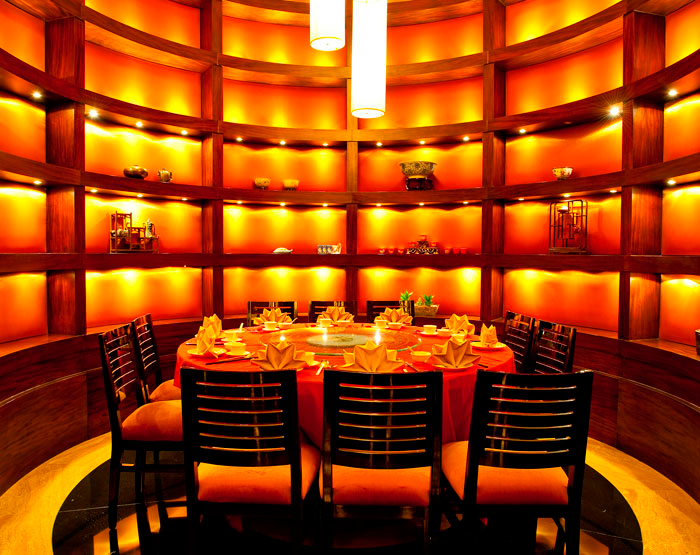
At this point no one doubts that LED technology has multiple virtues, but in certain applications of high level of exigency as for example hotels and restaurants, where the quality and comfort of the light is necessary, where it seeks to create sensations and emotions in its spaces , The warmth of incandescence is still missing. The emission of the LED at a specific wavelength, with no color temperature changes during its regulation curve is an advantage in many applications, but this uniformity differs from incandescence, where the color temperature changes to regular, Emitting light with very warm temperatures as its filament loses luminosity.
Aware of this trend, manufacturers of both components and luminaires are presenting their products with “Dim to warm” technology, where the color temperature is variable, depending on the regulation. At 100% emit warm light, 3000ºK or 2700ºK usually, which goes to very warm as we regulate, reaching in some cases up to 1800ºK in the minimum levels of luminosity. Juno Lighting, Iguzzini and Reggiani in luminaires, Philips, Osram and Megaman in lamps and Cree, Sharp and Led Engine components (modules and COB LED) are some of the first to implement this technology. In order to achieve the desired effect in the “Dim to warm”, the emission of the main LEDs, which have the highest color temperature (3000ºK or 2700ºK), are usually mixed with 1 extra warm LED, amber or Red, which is held steady throughout the regulation curve or even reverses its curve (off at 100% of the main and on when the main is turned off). This, a priori might seem simple to achieve, is not so much, because it is regulated by a single dimmer, which is also standard and at the end, the LED responsible for “heating” the final section of regulation next to the electronics Necessary, increases the costs of the system, although surely the market segment to which it is addressed mainly matters more the effect achieved.

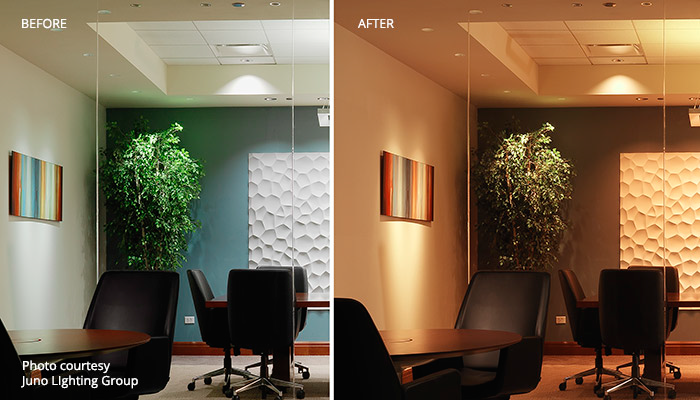
Design and decoration:
Natural lighting “What we have done is understand the importance of natural light and make the architecture help the design of spaces that take advantage of it. The first thing we do is to analyze how much natural light enters space; We designed the architecture to allow the greatest amount of natural light and already we began to see the whole subject of artificial light.
Adequate natural lighting is no longer a purpose to be fulfilled by the designer, it is an obligation, and that was well known by the great architect Oscar Niemeyer who used the natural light indoors not only as a means of saving, of improving the health of the Occupant or habitability of space, but amplified its value to a tool for the classification of spaces and forms, as a requirement of expression and meaning. So we can consider that natural light has more importance in architecture than most of us think. The perception and efficiency of the hand can be the perfect ally for a coherent and sustainable architecture with a natural light that claims its status.
Lighting in architecture The concept of architectural lighting as a “space modeled by light” should be one of the premises for the most careful light environmental design. Natural lighting in buildings is one of the environmental factors that most condition the architectural and constructive design of any building. The lighting project in architecture must be a resource that must be managed consistently.
Many architects throughout history have defended natural light as an indispensable complement to architecture. Although there are many architects who work with light in an exceptional way, as the previous naming, Tadao Ando or from the famed Gaudí with his famous phrase. . . “Architecture is the ordering of light; Sculpture is the play of light” An example of palpable luminosity we can see in this video of Casa Batllo. Even the nickname “the master of light, ” the architect Henning Larsen.
Types of lighting architecture
In particular, the types of light in architecture that we can find before a building or any construction are those listed below, regardless of the systems
Artificial lighting:
Direct sunlight (CSH) Diffuse solar light (CSdf) Reflected light (CRO) Reflected light (CRT) In the following chart we can better understand the types of natural light with reference to the types of light on a surface:
Lighting and emotional Design We want to enter into the world of LED lighting, projects and designs of lamps to begin to understand that lighting is changing strongly with an emotional design that catches the individual.
The lights catch the individual and in this article we want to show different innovative projects based on lights and led lamps that are revolutionizing the way of understanding light and its application from a different perspective, where design plays an important role.
Light and emotions
As an incision, the psychological effects of lighting are varied and of great value, and they affect to a great extent the tendency that is called Emotional Design, in this aspect we already speak in two articles of relevance. Natural illumination and its techniques and in the Article that we enter in the Color of the architecture.
The light has been present in all the architectural movements and its functionality can be analyzed from different aspects;
Light as need
– Light as signaling space
– Light as space modifier
– Light as a tool to create effects and feelings
It is about enhancing the value of lighting as a type of art that expresses feelings, changes characteristics and helps to configure a total artistic space.
To understand more about the Emotional Design aimed at lighting, we also have the e-MOBILE tool,
Lighting Projects:
Technical consultancy in lighting projects; Prades I+D offers its collaborators and clients a lighting Consulting department made up of a team of experts and specialists in home automation integration, who can advise you through the elaboration of a detailed lighting project based on I+Led technology.
If you wish, please contact us indicating your needs and we will be happy to assist you.


